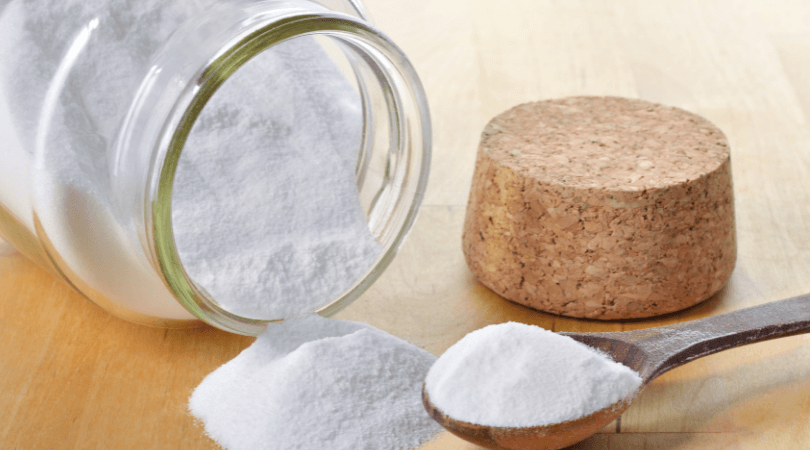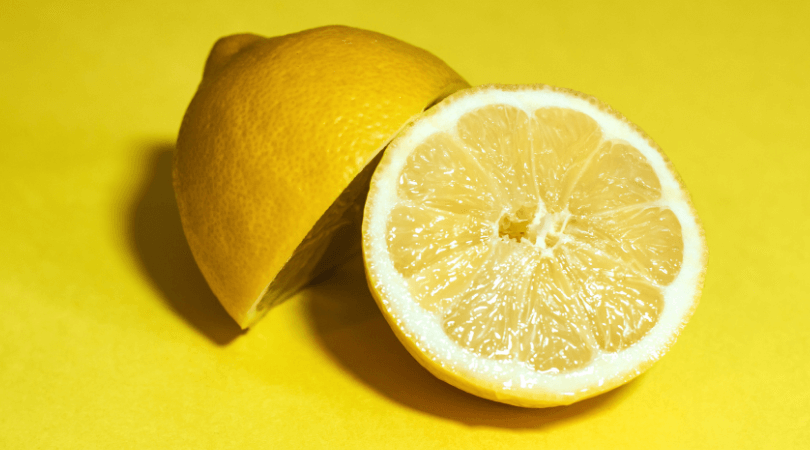Plastic has long become an integral part of our lives. It can be found in almost every corner of our homes, especially in the kitchen, utilized for many purposes like the ubiquitous storage to cutting boards to utensils designed for non-stick cookware, and plastic furniture as well.
Discoloration and staining is common problem for all kinds of products made from plastic. Common question making many people scratch their heads is how to remove stains from plastic containers? How to remove tomato stains from plastic? How to remove hard water stains from plastic?
However, don’t you guys worry as below I have mentioned proven ways to remove stains from plastic efficiently. These methods work on almost every plastic item: bowls, drinking glasses, spatulas, cutting boards, spoons, and laminate. Cleaning plastic was never this easy.
The key to ensuring a stain-free and clean plastic item is to use any handy household cleaner and rinse thoroughly after cleaning to remove any residue.
1. Bleach:
According to my personal experience, the best way to remove stains and blemishes from any plastic item is chlorine bleaching; Bleach is an easy and reliable way to clean tomato sauce and tomato paste stains, juice, tea, coffee, soda, ink, and all kinds of food dyes.
Make a solution of water and bleach. Use one tablespoon of bleach per cup of water. Let the items soak in the solution for a couple of hours. After stains are cleaned, wash the sites properly, rinse, and dry.
2. Alcohol:
Rubbing alcohol is a great way to remove tea, coffee, juice, tomato sauce, tomato paste stains, and stains caused by food dyes.
Usually, staining and discoloration are done instantly after rinsing the item immediately after applying alcohol or by washing it with water and detergent solution. If the blemishes somehow don’t disappear (although it’s doubtful), then pour the alcohol into the item and let it stay like that for a few minutes.
If the item is not a container, and pouring alcohol in it is not possible, use a larger container to keep the smaller object in.
Interesting Read – How to Cut Plexiglass | How to Cut Acrylic Sheet | The Ultimate Guide
3. White Vinegar:
Using vinegar is similar to using bleach. Even the ratio you will be using vinegar is the same, one tablespoon of vinegar with one cup of water. If you’re a bit anxious about using bleach on your plastic utensils, then vinegar is a pretty good option.
Vinegar is a natural food substance made from organic compounds that are not harmful and easily absorbed by the body. It is also proven that mixed vinegar with food can help the body with accelerating digestion. On top of that, vinegar won’t harm the plastic item in any way but kills almost all single-celled organisms like bacteria, and it kills viruses as well.
For stain removal, follow a similar procedure with the bleaching technique, and it proves an outstanding plastic stain remover. It can be utilized for removing watermarks as well.
4. Hand Sanitizer:
Don’t have to rub alcohol around? Try using a hand sanitizer, a variation on the rubbing alcohol method. Hand sanitizer is a great way to clean your plasticware – One of the prime ingredients in hand sanitizers is alcohol.
Apply the sanitizer directly on your plastic items, then wash, rinse, rub, and dry.
5. Denture Tablets:
This is an unusual participant in the list, but it works very well to remove stains from plastic items, as I’ve tried and tested. Since denture tablets are used to remove dentures, I thought it could be a great addition to the list.
The cleaning technique is simple, put the tablets in some hot water and pour the mixture into some stained container. Keep it that way till the discoloration is gone. Wash, rinse, and dry.
Engaging Read – When Was Plastic Invented? | The History of Plastics
6. Baking Soda Paste:
Apart from all the stains mentioned above, baking soda is a reliable way to remove oil residue. All you have to do is make a baking soda paste with water and apply it to the discolored container. Let the mixture stay in the container for 30 odd minutes, and then clean the container with a moist cotton cloth, wash, rinse, and dry.
7. Alka Seltzer:
The widespread pain reliever Alka Selter also comes with various benefits other than killing your pain. It’s a great product to get off tomato stains out of plastic. More helpful information from my side – it can also whiten and lighten your laundry, polish your jewelry, and clean your coffee maker.
Pour some warm water into the container and put two tablets. Let it sit for a couple of hours before washing. If the blemish is not gone, let it sit overnight.
8. Dawn Dishwasher Powder:
Suppose you’re looking for dishwasher soap made to remove stains and apply it outside the dishwasher. Go dawn dishwasher powder. Soak your container in warm water for 60 odd minutes. The discoloration will dissolve, and then you have to wash the item.
9. Cascade Plastic Booster:
A lot of people ask me how to remove tomato stains from plastic? Cascade product is a great way to do that. Apart from removing stains, it will keep your plastic items in good shape and give them a longer life. Just make a habit of using it with your dishwasher regularly, and you will witness incredible results.
10. Lemon:
Just rub the plastic with lemon juice properly and keep it under the sun for 1 or 2 days. The lemon juice and sun’s UV rays will remove the discoloration and kill bacteria and other viruses.
11. Salt:
Good old salt and some water are all you sometimes need to remove those stubborn stains. Use a damp cloth to scrub the effective areas. Repeat the same multiple times to eradicate discoloration.
Utilizing the methods mentioned above will help you increase the life span of plastic items in your kitchen if they age before their time or become unpleasant to see, as we all know very well that plastic is porous, which makes it soak more water. As a result, you may have some concerns about using bleach to clean it. If that’s the case, make the bleach diluted with more water.
Fascinating Read – Top 10 Injection Molding Defects (And How To Prevent Them)
Cleaning Plastic efficiently | Get Rid of Stubborn Tomato Stains –
I bet tomato stains must have made your life miserable at least once. Don’t worry; it happens with everyone and has happened with me as well.
First of all, keep one thing in mind that you can never remove tomato discoloration from plastic that has been microwaved. The heat from the microwave will bake the stain with the container. The stain is practically a part of that container now.
The best practice you can follow is never to put anything like tomato sauce and tomato paste in a plastic container, or you have to live with the blemishes and stains for your life. It’s better not to use plastic at all any tomato-based purposes.
A pro tip from my side is to use glassware to store tomato-based products. Using glass makes much more sense. It won’t leach chemicals and is also chemically inert.
FAQs –
1. How do you clean hard plastic?
Ans. The best way to clean hard plastic is to use a non-abrasive, all-purpose cleaner. Rinse with clean water and dry with a clean, soft cloth. Avoid using an abrasive cleaner that might scratch the plastic. Another good option is to use a diluted mixture of baking soda and water.
2. Does vinegar hurt plastic?
Ans. All the plastic products in your house, let alone in the kitchen can be cleaned using vinegar. But always avoid using vinegar to clean rubber parts or metal which vinegar can corrode.
3. How do you get the white residue off plastic containers?
Ans. It’s common to see white build-ups of mineral deposits on your containers. You can eradicate them using white vinegar, all you have to do is soak a paper towel with white vinegar and rub the paper towel over the affected area. Let it soak for about an hour, then scrub off the stains.
4. How do you clean polypropylene plastic?
Ans. Products made from polypropylene material are easy to clean. You can use Ajax or a slightly thicker mix of backing soda and water. The “pebbled” surface of polypropylene products can easily handle the slightly abrasive action of these types of cleaners.
5. How do you remove hand sanitizer stains?
Ans. Although hand sanitizer stains are pretty rare, if it bothers you, the simplest way to get rid of them is to apply toothpaste to the affected area.
Suggested Read –
- 6 Best Plastic Molding Techniques | A Complete Analysis
- What is Rotational Molding | Rotational Molding Process | Advantages & Disadvantages | Best Material for Rotational Molding
- What is Polystyrene? | The Definitive Guide
- Top 10 Injection Molding Materials (And Why They are the Best)
- What is Anionic Polymerization? An In-Depth Analysis
- How to Cut Polycarbonate | A Complete Analysis
- What is the Glass Transition Temperature of Plastics?
- What is Warpage? | Causes of Warpage | Warpage Variations
The Conclusion-
That was my try to answer how to remove stains from plastic. I believe I have mentioned enough points to make those annoying stains disappear from your precious plastic utensils. My personal favorite is the natural and easy-to-find ways like lemon and salt. In both, the things are dirt-cheap and happen to be found in any house.
Kindly share your thoughts and questions in the comment section.
Have a fantastic day.
Quick Navigation






